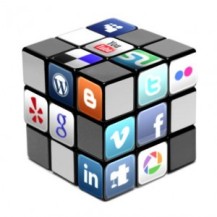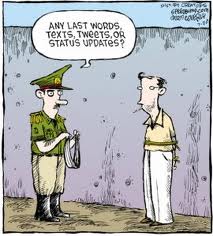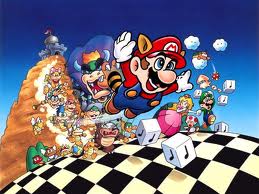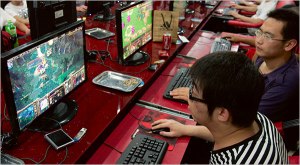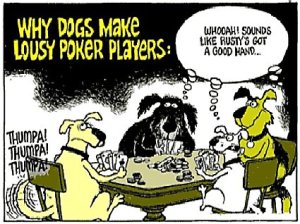2 page self-evaluation:
This course on humanities engaged me into the world we live and have lived in for many
years through history, putting to the forefront the many complexities that go along with an
organized society. From learning the pros and cons on subjects like “why study the
humanities”, and learning about symbols, text itself, and how to write an argumentative
paper, many areas are touched about humanities, the liberal arts, social structures, and
their influences.
We started the term learning about the liberal arts and how it was different from other
fields like science and math. The liberal arts teach one to think in calculated ways that go
beyond the linear thinking module of tracing point a to b immediately. Through research
and statistics it turns out that those with liberal arts degrees do just as well, if not better
than those with other degrees when it comes to finding work and having a good career.
Despite the old saying, “What are you going to do with a degree in Philosophy – become a
philosophy teacher?” it turns out employers are more interested in candidates that not only
can do the work, but can also think outside the box efficiently and effectively, opposed to
being a robot going through the learnt motions of a job.
Beyond learning about the liberal arts and learning how to write, we covered topics like
history, discourse, technology, and gender. All these topics have social implications
generated from different opinions or point of views. For example, in the film Reel Arabs,
we viewed how the media, specifically Hollywood, influenced generations of Americans to
be afraid of the “middle eastern Arab”, commonly depicted as the villain in films. Most
Americans know nothing of the middle east other than what’s shown to them by the media
and thus, that is their database for middle eastern knowledge, resulting in a consequence
of false stereotype beliefs that all “middle eastern Arabs” are villains. This film had a
resigning effect on me because they even showed Aladdin as an example towards this
stereotype, a movie I watched as a kid that I wouldn’t think twice about in terms of what
messages the film tries to evoke.
Another common theme I found throughout the course is how the media influences us –
from the early newspaper days to the modern digital media world. Take fast food
commercials for example: they usually advertise meat as their main products, as it
represents masculinity and a wild animal that was once strong and powerful. These
commercials usually aim at the men as meat eaters, as the media and society make it
seem as it’s mostly females that want to take care of themselves by eating healthy or a
plant-based diet. The man must eat meat, even if he has to devour his own kill.
Interrelating with what the media presents, especially with advertising, genders are used
appropriately for full effect and value. The Dolce Gabbana advertisement we saw in class
depicted several men in the heaven sky, surrounding a beautiful girl also wearing the Dolce
clothing. The advertisement suggested through it’s imagery that Dolce makes you sexy,
attractive, and wanted. The media often uses sex to sell products but this advertisement
was banned for going too far: it looked like the men were restraining the girl sexually
against her will.
These are some of the lessons of status that I have learned during this term. There can
always be at least two opinions to a theory and we have to view all cause, effect, and
consequence to determine which position we most agree with when it comes to a social
theory.
—
Week 2: Tsis p. 196
1) In this excerpt, Sanford J. Ungar discusses 7 misconceptions regarding the liberal arts that are as follows:
1) A liberal arts education is a luxury that most families cannot afford. An education in a specific field for career or training is more desirable due to getting work faster.
2)College graduates find it harder to get jobs with a liberal arts degree because it isn’t specific enough.
3) low-income and first generation college students cannot understand and use the liberal arts properly because their level of thinking is at a lower level.
4) Science, Technology, Engineering, and Mathematics are where the big jobs and rewards are found; not the liberal arts.
5) The liberal democrats ruined the country and therefore we should not continue to preach liberal arts if we want to change the trend.
6) America is the only country that holds high value to the liberal arts – other countries teach more practical fields and are “running way ahead of us”.
7) Liberal arts colleges are too expensive and irrelevant to generating future gains via jobs compared to other fields.
The general themes behind the misconceptions of the liberal arts are that it is a waste of money or too expensive, that the study of this degree isn’t desirable by hiriping employers and that the study is worthless towards generating a career. By labeling these facts as misconceptions, I read this list with a bias in which the reasons given were seen false facts. In the case if we were to label the reasons as assumptions, I would read the reasons as having a chance at being legitimately truthful.
—
Week 3: Reel Bad Arabs: How Hollywood Vilifies a People
1) I don’t think the public should take a film like Aladdin with its representations with complete seriousness. Firstly, it’s a cartoon film specifically aimed towards a young aged youth. It isn’t mandatory for a fiction film to be realistic and therefore Disney was free to pursue their vision as they wished. Would I suggest kids view cartoon films believing all details are the truth and morally “right”? No. Cartoon films have no structure towards the truth and therefore shouldn’t be seen as such.
2) Hollywood would and does add images of Arabs into films unrelated to the Middle East because it is one of the American propaganda machine’s top enemies versus the USA. Perhaps a catharsis effect is in play here where Americans are able to expel their racist feelings through film? Regardless, USA vs any terrorists (enemies) is usually more marketable and attractive for a pro american croud to watch than other enemies such as that in civil war.
3) When I think of Arab women, children, men, it is mostly details from what I’ve seen through the media whether it be film or the news. I see veils and outfits being worn, strong religious beliefs, the middle east, eternal conflicts, a group of people, etc Although the media can portray them in a violent fashion quite often, I try to remain open minded – always open to new facts. I could definitely see why Arabs or people of middle eastern descent would find Hollywood films racist and somewhat of a hate crime towards them.
4) I believe many people gather their knowledge from the media and movies and therefore I would think Hollywood could definitely influence the public’s views by advertising the “correct view” through their films.
5) In the Arab world, I would think these movies would be seen in a negative way, especially by young people. These movies depict the Arab world as the bad guys, causing extreme violence and being celebrated by the Americans once they are all killed and defeated. This would make it seem no one likes the Arabs and thay they’re bad, inferior.
6) The Iraq war was made easier by a century of demeaning stereotypes. This quote was echoed by Dr. Shaheen and I agree with it. Most people aren’t aware of most political facts and the media, especially film greatly influence what we know. By making Iraq look bad, it was easier for the public not to frown upon their own government.
7) I believe films have the power to reinforce or challenge stereotype animosities because they have the power to persuade us in whichever way they choose. People will always reflect or sometimes replicate the messages sent through film.
8) Most people watch movies and I believe film and the media overall play a big role in our views by influencing us through data in bulk over time.
—
Week 4: Tsis p.294 #3
Steven Johnson speaks about the Sleeper Curve: a new force altering the mental development of young people. This effect is derived from when young people engage in forms of mass diversion such as video games, violent movies, sitcoms. The children must stay updated with the story line and it’s complex relationships between characters in order to fully grasp all intended messages from the creators. This type of natural thinking process is part of the sleeper curve; an improvement for cognitive development that goes unannounced by the media. The various complexities involved in a show including characters and purposes are known as threads. By following threads, our mind adapts to follow a more complicated pattern of thinking. Usually, these “debased forms of mass diversion” activities are seen as turning humans into zombies by offering simple pleasures and supposedly “dumbing down” the brain in doing so but Johnson claims the opposite. Johnson uses a show like 24 to demonstrate a show with complex threads that intertwine to help move a story forward. He argues that viewers have to understand the relationships between characters and objects to fully understand the show’s messages however one could argue that a lot of viewers don’t think about what’s going on in the show and could just be satisfied by violent action scenes as their entertainment.
—
Week 5: Dolce and Gabbana ad
Tutorial 3 Humanities
Ideology, Hegemony Modes of writing arguments
Kinds of Ideology: politics, religion, morality, economic (capitalist vs marxist), gender,
ideology: framework on how we interpret the world
stakes of ideology:
hard to change perspective, can dehumanize… prejudice, bias?
Hegemony: (ideology and power together)
what does it mean? how does it work?
“what do you do”
Description:
non-narrative description that relates facts:
what something is/looks like/says or does
the goal is to be as objective as possible
to provide enough concrete details about the thing being described to create a mental image in reader’s minds
narrative “to tell”
telling sequence of events
ANALYSIS
how and why
Vlad -> partner
Argument
The attempt to persuade someone of something, by giving reasons or evidence for accepting a particular conclusion
argument = analysis plus the expression of a sense of disagreement, critique, or persuasion
1) depict: everyone gets sex with dolce, male dominance, females will be surrounded by men wanting them.
2) describe: women being held down by shirtless aggressive men that stare her down as she squirms, the sky: fantasy, heaven?
3) narrative: aggressive male holding a girl down, others watch
4) analysis: how and why… holding her down bent over because she’s trying to move/escape… and to submit her
5)argument: I would argue that it sells … not clothing. Maybe it depicts that if women wear it they will get smothered by members of the opposite sex.
by men but it doesn’t seem that rewarding for the men… they have to pin the girl down instead of her coming onto them.
—
Week 6: tsis 333 #4
In Dennis Baron’s “Reforming Egypt in 140 characters” he explains how it is thought that modern day technology helps to spread information more efficiently, resulting in better results. To demonstrate this Baron speaks about a twitter and facebook revolution which helped to spread the word for people to revolt against their injust totalitarian states of government. Recently these digital social media tools have been credited towards the overthrowing of President Hosni Mubarak in Egypt. However, skepticism towards the idea that social media helped overthrow the Egyptian government through its widespread messages does exist. While it’s possible there was a correlation of the social media awareness resulting in overthrowing the government, there also exists the fact that most people in Egypt don’t use or have easy access to the internet and if this is the case, surely many of the Egyptian citizens knew of what was being said on facebook or twitter. How could they know if they didn’t have access to the data? This kind of example begs to question how former historical events could have been affected if the internet and social media existed at that time. While surely messages could be spread more efficiently, and quicker, only those with the same privileges of technology would profit. There is no use for sending a message if others can’t receive it. The medium may have changed over time but the messages remain the same.
—
Week 9: tsis p.479 #2
In the passage “Having It Hit Way: The Construction of Masculinity in Fast-Food TV Advertising”, Freeman and Merskin describe a range of fast-food commercials and how they emphasize how “manly men” eat meat, whereas a more healthy plant-based diet is more advertised as a feminine lifestyle. Meat relates to hunting, violence, and power through its related activities and symbolism. Kings would worship strong buffaloes and then eat them at the end of the year to “gain its strength”. Just like many fast-food meat ads, the latest PlayStation 4 advertisement on television portrays and uses masculinity to sell its product. The commercial is aimed to bring awareness, to excite, and to sell the upcoming video game console to men, whom are the video games main consumers (although over the years, female gamers have become a significant portion of the consumer pool). Regardless, this commercial preaches to men through violence and camaraderie. The commercial begins with 2 friends as med-evil knights, swinging weapons at each other in battle. These men then transform into violent race car drivers – crashing into each other. Finally, the friends turn into soldiers, placed in a live battlefield with explosions all around. Despite all the surrounding violence, the men involved have smiles on their faces and sing a tune about a “perfect day” – suggesting a perfect day is playing violent video games with your male counterpart over the internet. They compare this camaraderie to a heterosexual relationship with a female companion through the love song that the men sing. Masculinity is advertised with these games through their violent actions and the suggestion that playing violent video games with your male counterpart is equivalent or better than having a heterosexual relationship with a female in terms of how much a “man” one is.
—
Week 10: TSIS p.361 #2
Tom Bissell speaks about video games, in particular Fallout 3, in which he moves around a nuclear war affected America with many options to engage in and view including exploring, fighting, goals, etc. Before he explains his love for the game, why, and what he does in it, he begins his passage with an anecdote of what he was doing during a world historical moment. President Obama was set to win the election as the first black American president ever for the United States and Tom Bissell had intended to watch the election results and victory speech. Despite Bissell wanting to follow this historical moment on television, he was engulfed in his own important moment; playing the game he had been waiting years for to release. Bissell played Fallout 3 for 7 hours straight when he first got ahold of a copy. This video game binge made him miss the USA election results and victory speech. I think he sets his essay up with this anecdote to prove that to him, the groundbreaking electronic game with visuals and game functions not seen before was more addictive, interesting to him than a milestone occasion in American politics. Video games are a prevalent form of entertainment and a common activity/hobby among modern people in developed countries. He then goes on to explain all the reasons and new technological achievements that he loves about the game that made him invest days into a virtual reality.
—
Week 11: TSIS p.604 #4
In paragraph 4, Krugman says that one of the best arguments supporting his view was an argument that was made to oppose Krugman’s belief. In essence, Krugman claims the opposing argument is wrong, verifying that his opinion is the right one. Krugman quotes Irving Kristol as saying that we shouldn’t fret over income inequality because social class distinctions are gone – we are all on the same social level. This statement hints that if we weren’t all on the same social level, then income inequality would matter because we would not have equal rights for future achievements – and such is the case in reality. Krugman explains, “Kristol’s fantasy world world … bears no resemblance to the real America we live in” – the one with social statuses and feelings of inferiority.
-Michael Spatz #995614982


